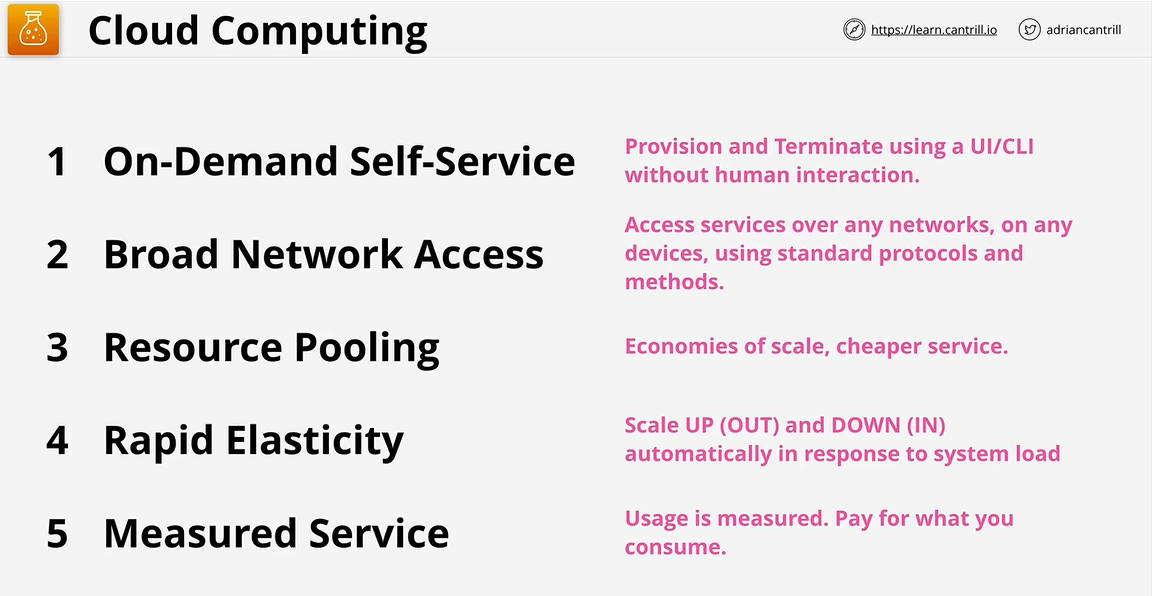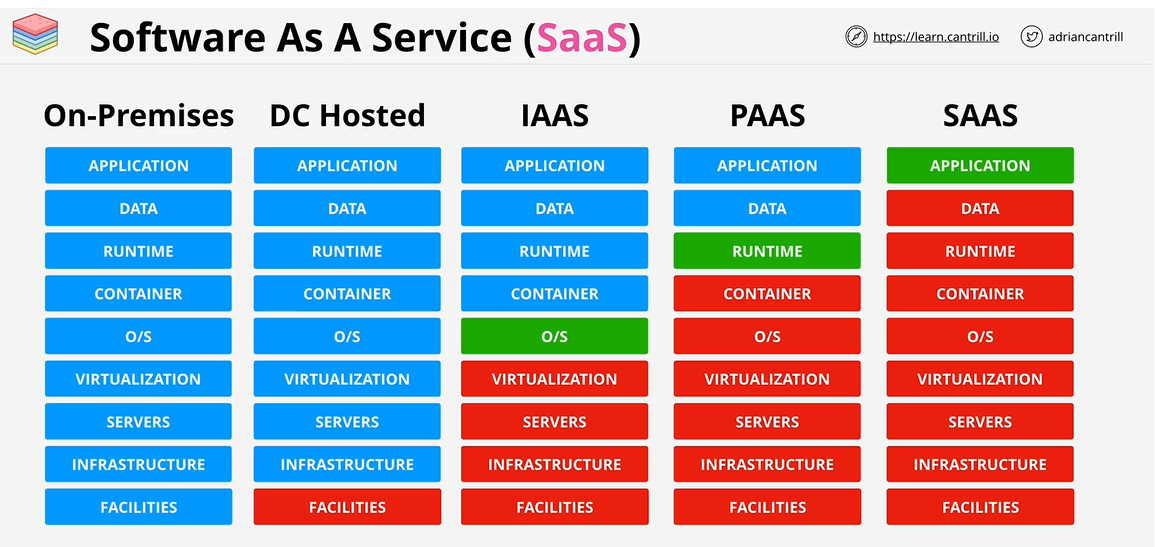1. Cloud Computing (What is it really?)
NIST Definition: https://nvlpubs.nist.gov/nistpubs/Legacy/SP/nistspecialpublication800-145.pdf Essential Characteristics:
- On-demand self-service. A consumer can unilaterally provision computing capabilities, such as server time and network storage, as needed automatically without requiring human interaction with each service provider.
- Broad network access. Capabilities are available over the network and accessed through standard mechanisms that promote use by heterogeneous thin or thick client platforms (e.g., mobile phones, tablets, laptops, and workstations).
- Resource pooling. The provider’s computing resources are pooled to serve multiple consumers using a multi-tenant model, with different physical and virtual resources dynamically assigned and reassigned according to consumer demand. There is a sense of location independence in that the customer generally has no control or knowledge over the exact location of the provided resources but may be able to specify location at a higher level of abstraction (e.g., country, state, or datacenter). Examples of resources include storage, processing, memory, and network bandwidth.
- Rapid elasticity. Capabilities can be elastically provisioned and released, in some cases automatically, to scale rapidly outward and inward commensurate with demand. To the consumer, the capabilities available for provisioning often appear to be unlimited and can be appropriated in any quantity at any time.
- Measured service. Cloud systems automatically control and optimize resource use by leveraging a metering capability at some level of abstraction appropriate to the type of service (e.g., storage, processing, bandwidth, and active user accounts). Resource usage can be monitored, controlled, and reported, providing transparency for both the provider and consumer of the utilized service.
Tips:

2. Public vs Private vs Multi vs Hybrid Cloud
Public: AWS or Azure or Google Private: AWS Outposts or Anthos - NOT VMWare or on prem infrastructure Multi: AWS and Azure or AWS and Google and Azure Hybrid: Private and Public together, not public and on prem infrastructure.
Definition:
Public = using 1 public cloud Private = using a dedicated on premise cloud not your legacy VMware infrastructure. Multi = using more than one public cloud Hybrid = public and private
Note: Hybrid is NOT public cloud and legacy on prem environment. Private clouds need to meet the 5 definitions of a public cloud.
3. Cloud Service Models
X as a service.
Everything is deployed as an infrastructure stack. What parts of that stack are handled by who is what determines the type of service model.
